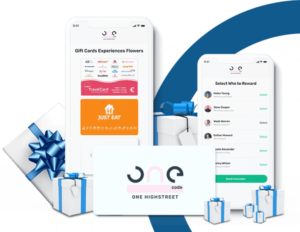As the world moves ever further down the online route, traditional customer loyalty and reward programs face being left behind.
The beauty of any a digital process is immediacy; people no longer have to leave the house to buy their shopping, check their bank balance or even to go to work thanks to digital services. There’s also its ability to appeal to the masses – anyone can learn to use a computer or tablet – and the seamless online journey it helps to create. Online means quick and convenient, so why not utilise the digital world and create an instant reward platform?
There’s not just the desktop experience to think about. 2015 was the year of the mobile: people are now more likely to be surfing on their phones than on a more traditional desktop computer. People continue to demand a world of immediacy– accessing information on the move using phones, tablets and even wearable technology.
We already know that an engaged audience is a captive audience – they stay longer, spend more, tell their friends about positive experiences and feel aligned with the brand identity and message. So to stay relevant when it comes to rewards, brands have to move into the online arena and be ready for millennials – and their younger siblings, the digital natives – to meaningfully communicate and engage with instant rewards.
What are Instant Rewards?
Instant rewards are digital gifts – used as part of a customer or employee engagement program – which come in myriad forms: online discount coupons, membership to a VIP area of a website and so on. For the purpose of this paper, digital rewards are online gift codes, received via email or SMS, which can be redeemed for a tangible gift – the best of both worlds and very flexible.
In a world that demands instant access to information, products and communications, issuing instant rewards brings a program up to speed with expectation; it’s efficient, comparably inexpensive and ensures association to the rewardable action by cutting out traditional longer wait times.
80% of the world’s population now carries a mobile device, and 90% of them use it to make a purchase after searching for information. 2015 is the year that mobile devices have overtaken desktop and laptop computers. According to an eMarketer study, UK adults now spend more time daily on a mobile device than they do at a regular PC, and the time has clocked up 27 minutes on last year. We now spend an average of 2 hours and 26 minutes every day looking at our phones.
The overall media time we spend with our various devices has shot up in recent years – starting at less than 2.5 hours in 2011 and growing to 9 hours 34 minutes in 2015. The evidence is there: people love to be connected, we’re doing more online and the experience becomes more refined as tech develops.
As a result, omnichannel customer care is a must-have and on top of that, customers expect a seamless online journey. Statistics from Aspect show that 3 out of 4 consumers prefer to solve their own customer service issues – mainly because they want to avoid speaking to someone and won’t wait in line.
The issue of immediacy is a big one. People online, and digital natives in particular, have a heightened expectation of instant gratification in terms of information, service and even products. Quick and easy access is paramount so uptake of and interest in digital rewards – which can be claimed and redeemed in a matter of smartphone swipes – are on the up.
The UK voucher market is currently worth £5.4billion annually and continues to grow, especially as digital uptake increases, and even thanks to recovering corporates which have begun to use instant rewards as the recession becomes a distant memory.
Then there’s the mobile market to consider; there are 4 billion mobile phones on earth. With a growing number of them able to receive digital vouchers, the convenience of instant reward will be embraced, and soon demanded, worldwide. Reward programs need to be ready.
The vast majority of UK shoppers have a smartphone they spend a lot of time using, and they rely on them to enhance the shopping experience: following favourite brands on social media, receiving email newsletters direct to their device and browsing, researching and purchasing with it too.
The mobile experience is only getting better – now consumers are able to pay for goods with a swipe of their phone thanks to Apple Pay, and soon they’ll have personalised ads pinged straight to the screen by the brands that get to know them.
If shoppers depend so on their phones, it’s no wonder they prefer a gift card experience that matches up: most Millennials pay far more attention to digital gift cards than two or three years ago, and more than three quarters want to carry a digital card over a print out.
By far the favourite characteristic of a digital gift card is its instant delivery, with 66% saying speedy arrival is the best thing about it. Most of us are used to being connected almost everywhere we go, able to shop, socialise and share wherever and whenever – creating an environment of instant gratification.
90% of 18-35 year olds are more interested in digital gift cards than they were two or three years ago6
77% prefer a digital card on their phone to carrying round a printout
When it comes to instant reward, we know that instant means “NOW!”, and the faster it is received, the better an impact it has on the customer relationship.
But people also say a digital card caters to effortlessness; it’s harder to lose and it’s also easier to redeem. They’ve got the cool factor, and tick the environmentally friendly box which is increasingly important, particularly among the Millennial generation.
When it comes to rewards, going digital is the best foot forward. Although providers are slow on the uptake, audiences are increasingly adopting, and expecting, digital. Building a responsive instant rewards platform is the best way to stay accessible and relevant; improving customer relationships, reducing costs, embracing social power and future proofing the customer experience, all on an immediate time scale.
An instant rewards solution is all about engaging with as many people as possible, because when customers are engaged they spend more, stay longer, and tell their friends about positive experiences.
To make rewards access easy is to reach and engage the largest audience and the easiest access is digital – according to YouGov, in 2013 73% of people accessed the internet every day – affording companies the most entrepreneurial use of widespread internet access. Instant rewards are the only ones to be delivered with utmost relevance, at the time when emotional loyalty is most available, directly after a positive transaction.
Since rewards are an important and influential part of the customer journey, a digital solution will be paramount in securing the future connection between brand and customer; a connection which in many cases already relies on the provision of an extensive online presence – ordering capability, live customer service and automated loyalty programs.
Market appetite is strong for online solutions to customer needs. Not only do customers love to use a ‘self-serve’ style tool – they also want to use it whenever and wherever they like. Going digital means supplying a rewards process fully optimised for use on a mobile device: deliverable, accessible and redeemable online, no waiting, no paper and no plastic. With the use of a unique codWe, your customers can receive a reward, enjoy it immediately and share the experience with friends.
Did you know that people will pay extra for a personalised experience?
Something as simple as sending a personalised email or offering the gift of choice with a digital gift code can mean the difference between a customer who returns, and a customer who abandons.
Going digital means sending immediate rewards to customers in real time. A reward is likely to be accessed on a mobile device, and a responsive site or app means the customer can head straight to redemption and choose their gift. As found by Sloan Management Review, the longer the delay in collecting a reward, the less powerful the loyalty creation, so the element of instant gratification is a strong influencer on wider perceptions of your brand.
There’s also the fact that a digital platform hands the customer autonomy when it comes to reward, since everybody loves to be offered a choice. Additionally, the app or site can act as a means of collecting analytical insights which make the basis of great cohort marketing strategies and are otherwise unavailable in such detail.
A digital-only rewards platform is the ideal environment for social integration; a convenient reward accessible online, followed by an item or experience that still has trophy value thanks to the propensity to share the news with others.
Where a digital reward is delivered on-screen, the option to share the news on Twitter, Facebook or Instagram is well-placed to invite the user to follow your brand online, or publish their reward redemption for others to see. Others still will use their rewards to purchase tangible gift items, an experience which is also widely recounted online.
While this kind of social proof reinforces the surprise and delight felt by the customer, it has a secondary role as a type of referral marketing for their friends and followers, which can be powerful: 48% of shoppers have made a purchase based on a social media recommendation.
This method of sharing can also be supported with social media advertising which is particularly strong in the case of online customer acquisition.
A fully digital rewards program removes a great deal of administration cost when it comes to preparation and postage of gifts and paper vouchers, since digital rewards take up no phys storage space and require no physical production.
Versus paper and plastic, digital design that requires HTML cod and can be easily changed allows for a rebrand in no time and out the relatively risky business of creating stocks cards and vouchers bearing brand names that might pull out at any time, essentially putting the design out of date.
Additionally, digital vouchers can be delivered directly to customers by email or SMS singularly or in bulk which is not only more direct, but requires little logistical or administrative effort and is far cheaper than the Royal Mail or courier options otherwise available.
The posed risk of loss and associated costs is also far reduced, partly thanks to the ability only to add value to a digital code once it’s purchased.
Thanks to tracking technology, it’s now entirely possible to see where a digital reward is, how it got there and what it’s spent on, drastically cutting down on the type of losses that are traditionally difficult to prove and therefore difficult to reduce.
By sending a digital reward by email or SMS, brands are contacting audiences directly with a message they want to receive, and they can see what happens next using analytics that look at email activity, web traffic and expenditure.
Gathering this type of substantial data means tracking spending patterns, which gives brands issuing rewards fantastic insights into their customers’ behaviour, preferences and emerging trends – leading to better communications and motivation opportunities in the future.
When it comes to traditional points-based loyalty programs, there is usually a segment of the audience which remains at a low accumulation of points (or other program currency) due to infrequent or low value spending.
These people, known as low-threshold customers, are not properly incentivised by a points- based program because rewards for high value spending are inaccessible or irrelevant, and the concept is lost. But with instant, the threshold at which rewards are earned can be applied to any behaviour or action, opening up brand incentives to a wider audience thanks to instant delivery and reduced admin costs, making rewards for low-value transactions more worthwhile.
Not only does this make instant rewards more accessible, it also makes an unlikely target segment more likely to be incentivised by a rewards program.
The future is digital, and for that reason instant rewards which embrace all that technology has to offer will put brands ahead of the market in terms of providing a seamless customer journey, delivering results fast and forecasting trends to give brands an advantage in the market.
In terms of a future digital audience, the Millennial influence is growing; they’re already a cohort to content with but in a couple of years there will be 75 million of them in the world, and they want digital. By the time their successors the Digital Natives come of age, they’ll have grown up with technology expect to be able to react to everything right now. Digital rewards already have the unique capacity to act simultaneously as instant reward and call to action.
According to an InComm survey, across all age ranges 55% of people are interested in storing digital cards on their phones, but that percentage jumps to 75% when considering Millennial responses only. The reasons? Instant delivery, cool factor, and hard to lose – they’ll increasingly access rewards using mobiles, tablets and wearable tech, the items that are always with them.
If it was to be lost though, a digital code can be almost instantly cancelled then reissued, and that’s not the only tech advantage digital holds over its alternatives. A code can be issued with niche branding at the drop of a hat thanks to digital styling, it’s flexible enough to support a huge range of promotions, and importantly there’s very little sensitive information required to do all of the above – placing digital rewards sensibly as the gift of the future.
To move forward with customer and employee engagement efforts, taking an instant rewards program online is the most effective step in a futureproof reward strategy – one that connects with audiences in the here and now, as well as in years to come.
Brands can get started with a partially online program, or one that takes the whole reward offering into the virtual, such is the flexibility of instant reward and the importance of tailoring the customer journey to audience demand and expectation.
Just any digital rewards program won’t do – enterprising companies are already leading the charge with programs that combine digital transactions with highly emotional experiences and offer enough gift code redemption choice so as to appeal to every type of consumer.
How to do it:
Have the Basics in Place
Get the basics in place to start with and offer a great product and top notch customer service. An instant rewards program always works best when it supports an experience worthy of customer loyalty
Design the Program to Fit the Customer Journey
A bespoke instant rewards journey is the only way to deliver on customer expectation and create an experience that makes sense in line with brand identity, message and overall strategy; a straight-out-of-the-box instant rewards program means customer service teams have to bend this way and that to accommodate.
Don’t Skip Social Integration
For maximum engagement, have the appropriate support online to engage all aspects of social integration – don’t miss out on referrals, likes, comments, shares, tags and reviews – and don’t forget to maximise engagement by having a team in place to stay in touch with the people who make contact via this route; it’s a number always on the up.
Think Big When it Comes to the Gift Range
Even with an expertly segmented audience, you need a giant gift range to accommodate every type of customer that might arrive at your instant reward platform so when it comes to the gift range, bigger is better. Choose a supplier who can offer your customers redemption for e codes, gift cards, tangible gifts, gadgets, experiences and travel. Cover all bases, and your reward program is perfect for everyone.







